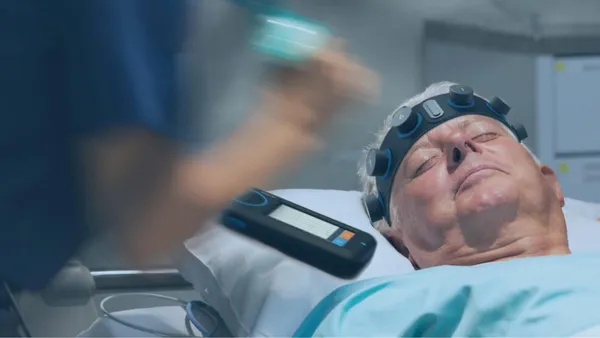Dive Brief:
- Heart valve specialist Edwards Lifesciences reported fourth-quarter revenue that was slightly above Wall Street expectations and per-share profit that met expectations, but its outlook for the first quarter was below the consensus forecast.
- Edwards said it is introducing new transcatheter aortic valve replacement products in the United States and Europe at a measured pace to give surgeons time to become familiar with the new technology and ensure the best patient outcomes.
- Investors are focused on an upcoming presentation of results from the company’s Partner 3 study of TAVR in patients who are at low risk for traditional open heart surgery for aortic stenosis. The data are expected to support an expanded indication for the company’s TAVR devices, which are implanted in a minimally invasive approach that offers patients an alternative to the open heart procedure.
Dive Insight:
Edwards’ softer-than-expected first-quarter forecast suggests analysts had been anticipating a more aggressive new product rollout. The company’s Sapien 3 Ultra valve gained approval in both the United States and Europe during the quarter. Edwards is also rolling out a self-expanding valve called Centera in Europe.
CEO Michael Mussallem, on the fourth-quarter call, told analysts the company is controlling its commercial introduction of Sapien 3 Ultra and Centera to focus on achieving high success rates for the procedure. Overall TAVR procedures grew at a mid-teens rate in the United States and Europe, he said. But while Edwards’ growth was in line with the U.S. market, its pace was in the low double digits year over year in Europe.
“Our worldwide sales grew at a lower rate due to a modest year-over-year share decline as we continue to exercise price discipline and hold global average selling prices stable,” Mussallem said.
The company’s fourth-quarter results, however, are bound to be overshadowed by the highly anticipated late-breaker presentation for the Partner 3 study, scheduled for the American College of Cardiology meeting in March. Edwards expects to receive FDA’s blessing for a low-risk TAVR indication later this year.
Edwards reported a 10% rise in fourth-quarter net sales to $977.7 million, slightly above the average analyst forecast of $976 million according to Reuters.
Fourth-quarter net income of $7 million, or 3 cents a share, compared with a loss of $2.8 million, or 1 cent, in the year-ago period. Adjusted for one-time items, earnings in the quarter were $1.17 a share, up 25% from a year ago and in line with analysts’ consensus forecast.
Edwards forecast first-quarter total sales of between $950 million and $1.01 billion, and adjusted earnings of $1.15 to $1.25 a share. The average analyst forecast was for first-quarter revenue of $997.2 million and earnings of $1.30 a share, according to Reuters.
RBC Capital Markets analyst Glenn Novarro, in a note to clients, predicted the revenue contribution from the new valves would become more significant in the second half of 2019.
For the full year, Edwards left its outlook for adjusted earnings unchanged at between $5.05 and $5.30 a share.










